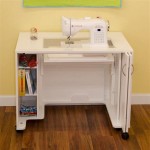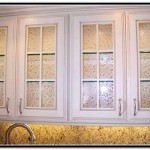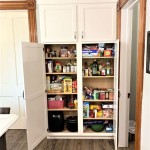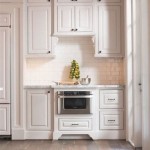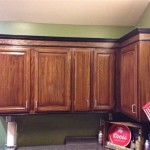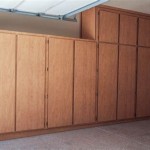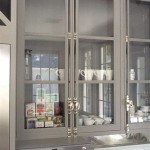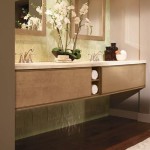How Much Does It Cost To Install Pull Out Shelves In Kitchen Cabinets?
Pull-out shelves, also known as roll-out shelves or slide-out shelves, have become a popular upgrade for kitchen cabinets, offering improved accessibility and organization. Instead of reaching deep into dark, cluttered cabinets, these shelves slide out smoothly, allowing homeowners to easily view and retrieve items. The cost of installing pull-out shelves can vary significantly, influenced by several factors, including the type of shelves, the materials used, the number of shelves required, and whether the installation is a DIY project or handled by a professional.
Understanding the cost implications of installing pull-out shelves is crucial for homeowners considering this upgrade. This article delves into the various elements that contribute to the overall expense, providing a comprehensive overview to aid in budgeting and decision-making. We will examine material costs, installation labor fees, DIY considerations, and potential additional expenses.
Key Cost Factors: Materials and Shelf Types
The type of material used in the construction of pull-out shelves significantly affects the overall cost. Common materials include wood, metal, and laminate, each offering different levels of durability, aesthetics, and price points. Wood shelves, particularly those made from hardwoods like maple or oak, tend to be more expensive than those constructed from cheaper materials like particleboard or MDF (medium-density fiberboard). However, solid wood shelves offer superior strength and a more premium appearance.
Metal shelves, often made from stainless steel or coated wire, offer a sleek, modern aesthetic and are typically resistant to rust and corrosion. These are a good option for areas that may get wet. Laminate shelves, consisting of a thin layer of decorative material bonded to a substrate, are an affordable option but may not be as durable as solid wood or metal alternatives.
The type of pull-out mechanism also impacts the cost. Basic pull-out shelves utilize simple slides, while more advanced options may feature soft-close mechanisms or full-extension slides. Soft-close mechanisms prevent the shelves from slamming shut, reducing noise and potential damage, while full-extension slides allow the shelves to extend completely out of the cabinet, maximizing accessibility. These added features typically increase the price per shelf.
Beyond the basic materials, additional components such as dividers, risers, or specialized organizers can also contribute to the total cost. Customization options, such as requesting specific dimensions or finishes, often come with a premium price tag. Therefore, it is important to carefully consider the desired features and materials when estimating the cost of pull-out shelves.
Labor Costs and Professional Installation
Choosing between DIY installation and professional installation is a major factor influencing the overall cost of installing pull-out shelves. While DIY installation can save on labor costs, it requires certain skills and tools. Homeowners lacking the necessary experience or confidence may prefer to hire a professional carpenter or contractor. Professional installation ensures that the shelves are properly aligned, secured, and functioning smoothly.
The cost of professional installation can vary depending on the complexity of the project, the number of shelves being installed, and the hourly rate of the installer. Complex installations might involve modifying existing cabinets or addressing structural issues which could add to the cost.
The hourly rate for a professional carpenter or handyman can range from $50 to $150 or more, depending on location and expertise. A small project involving just a few shelves might cost $200 to $500 in labor, while a larger project involving multiple cabinets and customization could easily exceed $1000. Be sure to get several estimates before choosing an installer. Factors that can influence labor costs include travel time to the job site, the need for specialized tools, and any necessary modifications to the existing cabinets.
Before hiring a professional, it is advisable to obtain multiple quotes from different contractors and thoroughly vet their credentials and experience. Checking online reviews and asking for references can help ensure that the chosen installer is reputable and capable of providing quality workmanship. It is also important to clarify the scope of work and obtain a written contract outlining the project details, timeline, and payment terms to avoid misunderstandings or disputes later on.
DIY Installation: Cost Savings and Potential Pitfalls
For homeowners comfortable with basic woodworking and DIY projects, installing pull-out shelves themselves can be a cost-effective option. DIY installation eliminates labor costs, allowing homeowners to save a significant amount of money. However, it is essential to carefully assess one's skills and experience before embarking on a DIY project.
The cost of DIY installation primarily consists of the cost of materials. Depending on the type and number of shelves, this could range from a few hundred dollars for a small project to several hundred or even a thousand dollars for a more extensive installation. Tools that you may need to buy if you don’t have them already can also increase the cost of a DIY install. Those can include a drill, level, measuring tape, and saw.
DIY installation also carries certain risks. Improper installation can lead to misalignment, instability, or damage to the cabinets. Inaccurate measurements or incorrect assembly can result in shelves that do not fit properly or function smoothly. Furthermore, DIY installations may not be covered by warranties, leaving homeowners responsible for any repairs or adjustments down the line. It is therefore crucial to thoroughly research the installation process, follow instructions carefully, and take necessary safety precautions when undertaking a DIY project.
Homeowners considering DIY installation should also factor in the time commitment required. Installing pull-out shelves can be a time-consuming process, especially for those lacking experience. It is important to allocate sufficient time and patience to ensure a successful outcome. While DIY installation can offer significant cost savings, it is essential to weigh the potential benefits against the risks and challenges involved before making a decision.
Another factor to consider is the availability of pre-made kits. Many retailers offer pre-made pull-out shelf kits that include all the necessary components and instructions. These kits can simplify the installation process and reduce the likelihood of errors. However, pre-made kits may not be available in custom sizes or configurations, limiting the flexibility of the installation. Custom-made DIY shelves can be made. The cost may be higher but will allow for more space.
Additional Costs and Considerations
Beyond the cost of materials and installation, several additional factors can impact the overall expense of installing pull-out shelves. These include cabinet modifications, disposal fees, and potential unforeseen problems.
In some cases, existing cabinets may require modifications to accommodate pull-out shelves. For example, it may be necessary to remove existing shelves, adjust cabinet door hinges, or reinforce cabinet walls. These modifications can add to the overall cost of the project, especially if they require professional assistance.
Disposal fees may also apply if you need to dispose of old shelves or other materials removed during the installation process. Some municipalities charge fees for bulky waste disposal, while others offer free drop-off services at designated recycling centers.
Unforeseen problems, such as damaged cabinets or structural issues, can also arise during the installation process. Addressing these problems may require additional materials, labor, or modifications, potentially increasing the cost of the project. It is advisable to set aside a contingency fund to cover unexpected expenses.
Another consideration is the long-term value and benefits of pull-out shelves. While the initial investment may seem significant, pull-out shelves can improve kitchen organization, increase storage space, and enhance accessibility. This can make cooking and cleaning easier and more enjoyable, potentially adding value to your home. When evaluating the cost of pull-out shelves, it is important to consider the long-term benefits and return on investment.
Furthermore, energy costs can be factored into the decision. Efficiently organized cabinets can reduce the time spent searching for items, which in turn can decrease the amount of time the refrigerator door is open. This can lead to lower energy consumption and potential cost savings over time.
Finally, consider the impact on home value. While it's difficult to quantify precisely, well-organized and functional storage solutions like pull-out shelves are generally seen as a positive feature by potential homebuyers. This can be a factor in the overall appeal and perceived value of your home if you decide to sell in the future.

How Much Does It Cost To Install Pullout Shelves In Kitchen Cabinets Bob Vila
Made To Fit Slide Out Shelves For Existing Cabinets By A Shelf Costco
Made To Fit Slide Out Shelves For Existing Cabinets By A Shelf Costco

Installing Sliding Shelves In A Pantry Southern Hospitality

Kitchen Pull Out Shelves Sliding Cabinet Slide

Installing Sliding Shelves In A Pantry Southern Hospitality

Roll Out Shelves Home Solutions Northwest Closets Wallbeds

10 Roll Outs For Kitchen Cabinets Ana White

How To Make Simple Easy Sliding Shelves

Roll Out Shelves Home Solutions Northwest Closets Wallbeds
Related Posts

